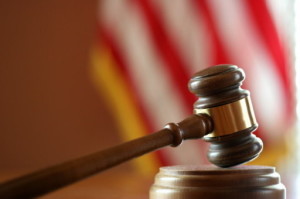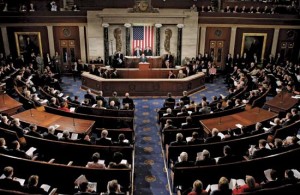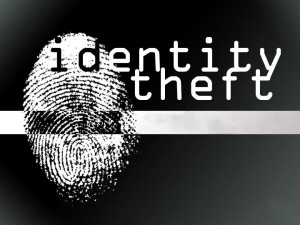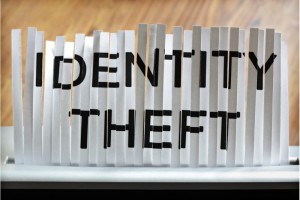Potentially tens of thousands’ of cases gone wrong
Monday, February 10th, 2020 @ 3:50PM
In July 2013, the FBI admitted that the foundations of what it called “hair comparison evidence” – a technique that its agents had used in hundreds of criminal cases nationwide and spread through the training of state-based detectives potentially through tens of thousands of other cases – were scientifically invalid. A preliminary review of the FBI’s follicular flaws found that:
- Microscopic hair analysis could not scientifically distinguish one individual to the exclusion of all others.
- Statistical weight could not be given to comparisons to suggest a likelihood that the hair derived from a specific source.
- Expert witnesses should not cite the number of hair analyses they had conducted in the lab to bolster the idea that they could definitively state that a hair belonged to a specific individual.
All three errors were made by Agent Oakes in front of Perrot’s jury.
Over the past few years, advanced understanding in the science of hair types has left hair analysis, as a forensic tool, in tatters. Today’s consensus by real experts is more straightforward than ever: there is nothing that can credibly be said, by FBI-approved analysts or anyone else, about about the frequency with which particular characteristics of hair are distributed in the human population.
In other words, microscopic analysis of hair – the very analysis that put George Perrot and so many people behind bars – is virtually worthless as a method of identifying someone. It can only safely be used to rule out a suspect as the source of crime-scene materials or in combination with the vastly more accurate technique of DNA testing.
As the scientific basis of hair analysis has crumbled, the scale of the judicial catastrophe caused by the FBI’s enthusiastic use of it for decades until about 2000 has now begun to emerge more fully. On Monday, the FBI and the US Justice Department, together with the Innocence Project and the National Association of Criminal Defense Lawyers, released the findings of the first stage of a joint investigation into these historic civil rights mistakes.
The results, first reported by the Washington Post, concluded that an astonishing 26 of the 28 FBI agents who had provided testimony as expert witnesses at trial based on microscopic hair analysis had made statements to juries that are now known to be false. Their erroneous evidence was found in a full 90% of the trial transcripts the team has studied.
The government has identified almost 3,000 cases in which FBI agents may have given testimony involving the now-discredited technique. So far only about 500 of those cases have been been reviewed.
Some 268 of those involved FBI examiners providing expert evidence in court that pointed to the guilt of the defendant – of which 257, or 96%, included false testimony.
Most shockingly, at least 35 defendants received the death penalty, 33 of which were the subject of false FBI testimony. Nine of the prisoners were executed and five died from other causes on death row.
Chris Fabricant, the Innocence Project’s director of strategic litigation who is representing Perrot in his ongoing struggle for freedom, called the FBI’s use of hair analysis a “mass disaster” for the criminal justice system.
“We have potentially tens of thousands of convictions tainted by false evidence,” he told the Guardian. “It’s going to take a herculean effort to right the wrongs in these cases, and so far we have made only a tiny start.”
In a paper published this month and written with William Tucker Carrington of the University of Mississippi law school, Fabricant traces the first reported use of hair analysis to 1855, when John Browning and his son, Gaston, were tried for murdering a plantation overseer. Hairs were found on a rope in the defendants’ home which were compared to the Brownings’ hair and found to be identical.
The pseudo-science deployed in 1855 changed little in over a century. What did change was that after the second world war, the FBI embraced the technique, giving it a professional veneer – a government stamp of approval.
“They began presenting false evidence to juries based on scientific language that was very impressive to juries. It was like a dirty bomb that went off in the criminal justice system – hair analysis was said to be objective, unbiased and definitive, so it was both very prejudicial against defendants and very powerful,” Fabricant said.
Admitting fault as a nation, as cold cases persist
A review found that microscopic analysis of hair is virtually worthless as a method of identifying someone. Photograph: Steven Puetzer/Getty Images
Despite the FBI’s unqualified admission of error, George Perrot remains in prison, with no immediate resolution to his case in sight. The Commonwealth of Massachusetts continues to oppose a retrial, with a hearing scheduled for late this summer.
Fabricant said he is particularly anxious about the future for potentially thousands of people convicted for serious crimes such as murder and rape on the basis of false evidence given by detectives at state level, nearly all of whom were trained by the FBI in microscopic hair analysis. The federal agency has admitted its mistakes and is now working hard to address the miscarriages of justice on a national level, but state authorities are proving much more sluggish in their responses.
Typical is the case of Timothy Bridges, who is 23 years into his sentence in North Carolina. He was convicted of the 1989 sexual assault and beating of an elderly woman in Charlotte.
The criminal investigation uncovered no physical evidence of any sort to link Bridges to the scene – like Perrot, no semen or fingerprints were found, nor blood or DNA of any sort. But there were two hairs collected at the victim’s home and analyzed by an examiner for the state of North Carolina, who had been trained by the FBI in precisely the same now-discredited techniques.
The two hairs, the examiner told the jury at trial, had “likely originated” with the defendant. Bridges was sentenced to life in prison.
This month lawyers acting for Bridges, with the backing of the Innocence Project, petitioned the county court of Mecklenburg calling for a retrial. The state attorney general is opposing such a measure, but has initiated a search for the hairs in hopes that DNA testing could be carried out that would provide reliable clues. Previously, the state had indicated that the hairs had been destroyed, in violation of North Carolina law.
Fabricant, who is also acting on the Bridges case, said that states where examiners had been trained by the FBI in hair analysis had to act.
“Tens of thousands of people may have been caught in this trap,” he said. “When even the FBI has admitted liability, then states who were trained to use this discredited technique are now legally and morally obligated to step up to the plate.”
https://www.theguardian.com/us-news/2015/apr/21/fbi-jail-hair-mass-disaster-false-conviction
Posted by cfegov
Categories: Criminal Behavior and Misconduct Within the Department of Justice and FBI












